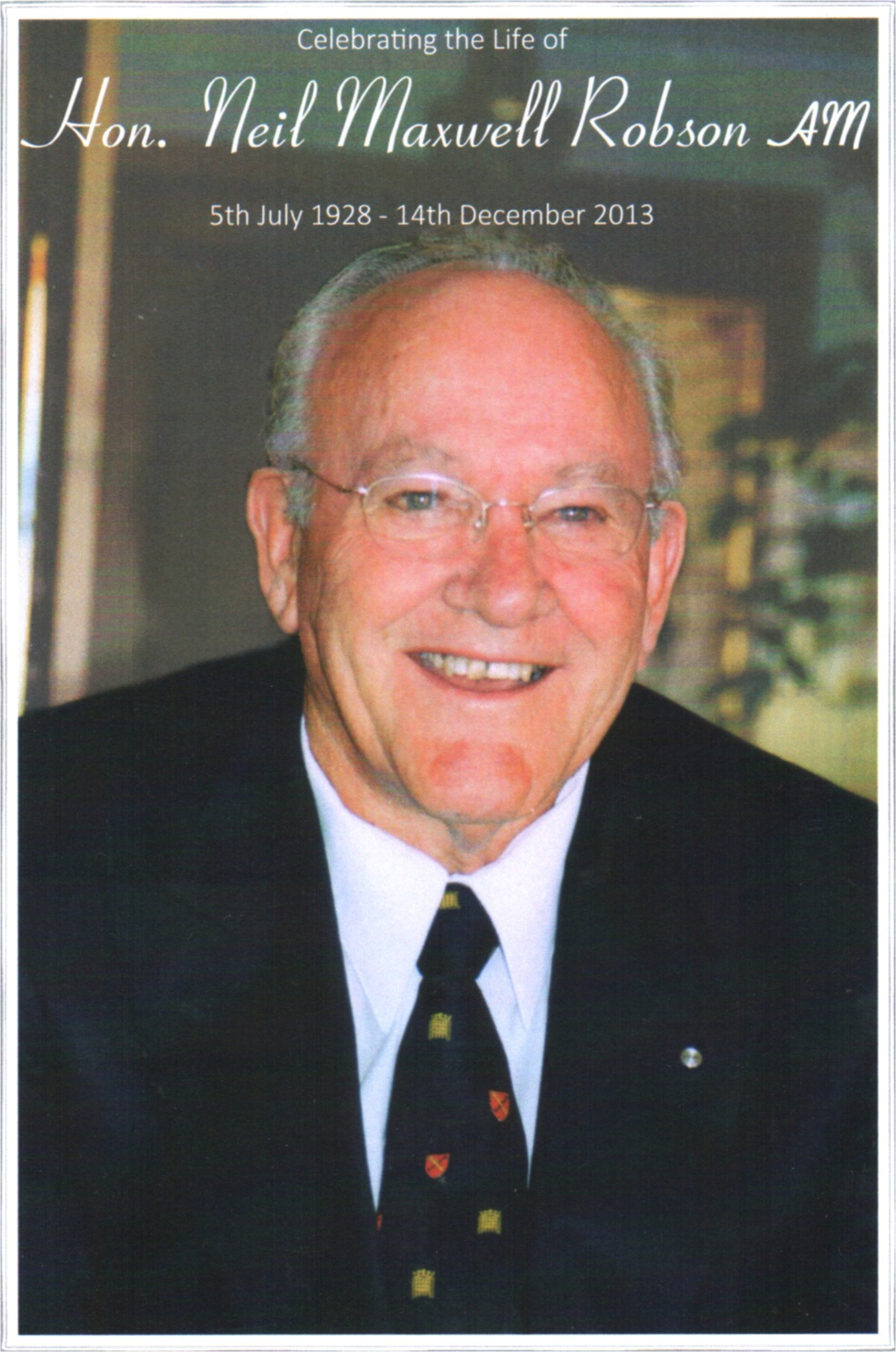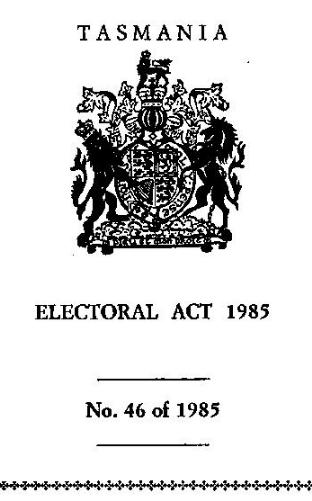|
|
Proportional
Representation Society of Australia Inc. |
|||
|
Tel +61429176725 |
||||
|
Robson
Rotation
|
||
|
AIM: Robson Rotation
is used, where
preferential voting systems apply, to
avoid advantages
being unjustifiably gained
by certain candidates that might
otherwise happen to have their names
appear, on all the ballot-papers issued,
in advantageous or prominent positions
on a ballot-paper with a single column
for all candidates, like those used for
elections to Tasmania's Legislative
Council or, as it applies for elections
to Tasmania's House of Assembly, within
their party's column on the
ballot-paper, leaving other candidates'
names appearing - on all the
ballot-papers - in less advantageous or
prominent positions. Such relative
advantage always occurs, for no good
reason, when all ballot-papers issued
show all the candidates listed in an
identical order. See Neil Robson's
booklet, 'Everybody
Counts'. |
||
|
Robson
Rotation has completely
overcome two difficulties that soon
became evident with preferential voting:
Robson Rotation
has put an end to those problems in
Tasmania and the Australian Capital
Territory. The
Tasmanian
and
Australian Capital Territory use of Robson
Rotation each reduces the
artificial concentration of votes
on a party organization's proclaimed
number one candidate, and instead
reflects voters' explicit choices of
other candidates within their
preferred party, in striking contrast
to the Australian Senate.
|
||
|
Robson
Rotation results in ballot papers
for elections for both
Houses of the Tasmanian Parliament - and
for municipal councils - being printed
in batches of equal numbers with each
batch having the name of candidates
rotated equally in different prescribed
positions in the party column. Robson Rotation was introduced in
a 1979 private
member's bill by Neil Robson,
a Liberal MHA for Bass
(1976-89), supported by
the Lowe ALP Government, and passed by
the Legislative Council.
Antony Green explained that " Robson Rotation is named after Neil Robson, a Tasmanian Liberal MP whose private members' bill introducing the new ballot paper was voted into law with the support of MPs from the then governing Labor Party. At the time the bill was introduced to Parliament in 1979, the Tasmanian Labor Party was riven by factional disputes, with the dominant faction attempting to introduce a formal party ticket for the first time. Sitting Labor MPs undermined the plan by voting for rotation, making it almost impossible to produce a workable how-to-vote card."
|
||
 |
||
|
BALLOT-PAPERS: The rotation
of names from batch to batch is designed
to prevent such relative advantage, and
results in a prescribed number of
different batches of ballot-papers, each
with different prescribed permutations
of candidates' names within the party
columns. See the examples of rotated
ballot papers at the 1992 election
in Denison for the House of Assembly.
The principle is more easily seen in the
single column of candidates' names in Tasmanian municipal elections,
where no party affiliations or groupings
are evident in the electoral provisions. |
||
|
LAWS:
The
legislative provisions for Robson
Rotation for both houses of the
Parliament of Tasmania appeared in
Tasmania's Electoral
Act 1985. The
relevant Sections 106 and 107, and Schedule 2
of that Act are shown below. The
current, consolidated Principal Act is
the Electoral
Act 2004, whose Sections 97
(House of Assembly polls) and 98
(Legislative Council polls), and Schedule
3 deal with Robson
Rotation. Robson
Rotation applies in the Electoral Act 1992
of the Australian Capital
Territory, and its
existence there was entrenched by the Proportional
Representation (Hare-Clark)
Entrenchment Act 1994.
|
||
|
|
|
|
|
|
|
|
|
[Reserved 5 June 1985] [Royal Assent 21 August 1985] BE it enacted by His Excellency the Governor of Tasmania, by and with the advice and consent of the Legislative Council and House of Assembly, in Parliament assembled, as follows: - PART I PRELIMINARY 1 - This Act may be cited as the Electoral Act 1985. 2 - (1) This Act shall be reserved for the signification of the Sovereign's pleasure thereon. (2) This section and section 1 shall commence on the day on which a proclamation of the Governor signifying the Sovereign's assenting to this Act is notified in the Gazette. (3) Except as provided in subsection (2), this Act shall commence on such day after the day referred to in that subsection as may be fixed by proclamation. * * * * * * * 105 - Whenever a poll is required to take place in accordance with section 94 (3) or 102 (2), the Chief Electoral Officer shall, before and in time for the poll, ensure that the returning officer responsible for the conduct of the poll is provided with sufficient ballot-papers to enable him to carry out that responsibility. 106 - (l) The Chief Electoral Officer is responsible for ensuring that the ballot-papers for use at an Assembly election - (a) are in accordance with Form 13 in Schedule 1; and (b) are printed and collated as provided by this section and by and under Schedule 2. 107 - (1) The Chief Electoral Officer is responsible for ensuring that the ballot-papers for use at a Council election - (a) are in accordance with Form 14 in Schedule 1; and (b) are printed and collated in accordance with this section and by and under Schedule 2. (2) In causing ballot-papers to be printed for a Council election - (a) the Chief Electoral Officer is responsible for ensuring that - (i) the names of the candidates for election are printed in a single vertical column; (ii) the order in which the names of candidates for election are to be printed in each batch of ballot-papers is the order as determined in accordance with Schedule 2; (iii) the surname of each candidate for election is in conspicuous type; (iv) each candidate is identified, as is determined by the Chief Electoral Officer, by his given name or names, by the initial letter or letters of his given name or names, or by a combination of his given name or one or more of his given names and the initial letter or letters of his other given name or names (if any); (v) the given name or names or the initial letter or letters of the given name or names of each candidate are in less conspicuous type than the type in which his surname is printed; and (vi) a square is printed opposite the name of each candidate; (b) a given name, or the initial of a given name, of a candidate may be printed on a line after the line on which his surname is printed; and (c) where a similarity in the names of 2 or more candidates is likely to cause confusion - the Chief Electoral Officer may arrange the names with such description or addition as will enable them to be distinguished from each other. -----------------
Electoral Act 1985 SCHEDULE 2 Sections 106 (1) (b) and 107 (1) (b) PRINTING AND COLLATION OF BALLOT-PAPERS 1. In this Schedule, unless the contrary intention appears - "column", in relation to - (a) a ballot-paper for an Assembly election in respect of which there is no group of candidates or a ballot-paper for a Council election, means the single vertical column in which the names of the candidates are to appear on the ballot- paper; (b) a ballot-paper for an Assembly election in respect of which there is one group or more than one group of candidates and candidates whose names are not included in such a group, means - (i) any of the vertical columns in which the names of candidates included in such a group are to appear on the ballot-paper; or (ii) the vertical column in which the names of the candidates whose names are not included in such a group are to appear on the ballot-paper; or (c) a ballot-paper for an Assembly election in respect of which there is one group or more than one group of candidates and no other candidates, means any of the vertical columns in which the names of candidates included in such a group are to appear on the ballot-paper; "favoured position", in relation to a column of a ballot-paper, means (reading from the top of the column) - (a) where the names of 2 candidates are to appear in the column - the first position in the column; (b) where the names of 3 candidates are to appear in the column - the first and third positions in the column; (c) where the names of 4 candidates are to appear in the column - the first and fourth positions in the column; (d) where the names of 5 candidates are to appear in the column - the first, third, and fifth positions in the column; (e) where the names of 6 candidates are to appear in the column - the first, second, fifth, and sixth positions in the column; (f) where the names of 7 candidates are to appear in the column - the first, second, sixth, and seventh positions in the column; (g) where the names of 8 candidates are to appear in the column - the first, second, seventh, and eighth positions in the column; (h) where the names of 9 candidates are to appear in the column - the first, second, eighth, and ninth positions in the column; and (i) where the names of 10 or more candidates are to appear in the column - the first, second, third, and last 3 positions in the column. 2 - In relation to each candidate whose name is required to be included in the column or, as the case may be, one of the columns of a ballot-paper in accordance with section 106 or 107 - (a) there shall be printed, in respect of each of the favoured positions for that column, a batch of ballot-papers on which the name of that candidate appears in such a favoured position; and (b) the number of ballot-papers in each batch on which the name of that candidate appears in that column in a particular favoured position shall, as far as is practicable, be equal to the number of ballot-papers in each of the other batches of ballot-papers on which the name of every other candidate whose name is to be included in that column appears in that favoured position. 3 - For the printing of the first batch of ballot-papers, the names of the candidates in the column or, as the case may be, in each of the columns shall be listed in the alphabetical sequence of the surnames of those candidates. 4 - Subject to the provisions of this Schedule, the printing order for subsequent batches shall be as prescribed by the regulations. 5 - Where 6 or more names are to be included in a column, the name of a candidate shall not appear immediately above the name of a particular other candidate on more than one batch of ballot-papers where the names of both candidates would be in favoured positions in that column. 6 - Before ballot-papers for an election in respect of an electoral division are distributed to returning officers, the Chief Electoral Officer shall, as far as is practicable, ensure that each issue of ballot-papers is collated in such a way that the ballot-paper immediately following another ballot-paper in the issue is in a form different from that of the other ballot-paper. 7 - The officer in charge of each polling-booth at which voting for an election is taking place or, as the case may be, the retiring officer or another electoral officer under Division 7, 8, or 9 of Part V, shall issue ballot-papers so that, as nearly as practicable, each elector who enters the polling-booth, or who applies for a ballot-paper after the first elector, is given a ballot-paper, in a form that is different from the form of the ballot-paper that was issued to the elector who immediately preceded him. __________________ |
||
